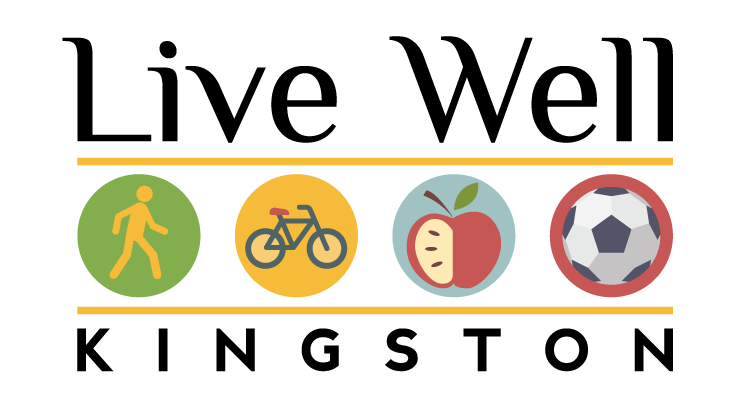Whether you’re on Medicare, Medicaid, employer-provided insurance, self-insurance, or are completely uninsured, odds are there are some situations where you feel stuck; you need medical help, but you’re not sure how you’re going to pay for it.
Before you go on GoFundMe, check in with Kingston’s community of healthcare non-profits. For no charge, you can call or walk in, and see someone who specializes in helping un or underinsured people qualify for different programs or forms of assistance, or get referred to someone who does.
They may also be able to assist you in other ways that will help you get and stay healthy; finding more affordable housing, a better job, childcare, transportation and even groceries. They’re even handy at referring people to healthcare providers who work on a “sliding scale” based on your income.
The eight organizations interviewed below are just a sampling of all of the organizations that do some work in this arena: the Maternal Infant Services Network, Mental Health Association of Ulster County, Healthcare is a Human Right, the ARC of Ulster Greene, Hudson Valley Mental Health, Ulster County’s Veteran Services Agency, and the O+ Festival are also active.
Below you can read a little about the organizations and specialists who can help you afford healthcare; their common experiences, challenges and successes.
1. RCAL
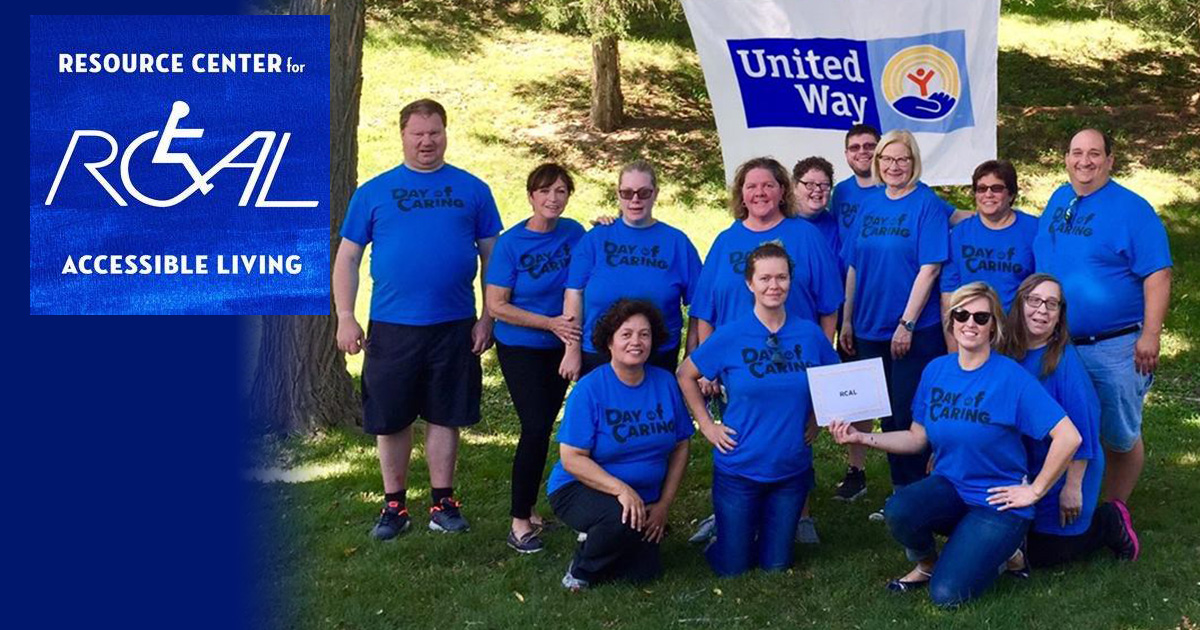
Name: Debbie Denise, Benefits Advisor
Mission: RCAL helps anyone with a disability to achieve independence and integration in society to allow them to live as independently as possible, and to be a part of the world.
How RCAL helps:
I see about 25 people a week. At least 10 of them are seeking some form of Medicaid. People cannot afford health insurance these days. A broken leg will send you to bankruptcy court. Medical expenses are through the roof, especially for the elderly who are on a fixed income.
Medicare has very poor home health aide benefits for our patient population. Generally, if they’re coming out of a hospital situation, they might be able stay in their homes if they had a little bit of help. They’ve reached that point where they can’t lug laundry or swing a mop, but they could live in their home with some help.
The cost depends on the level of aid, on the level of $13 an hour and up, and part of my job is to help them navigate that. We don’t offer the home health aide, but I help them navigate the system, so when they come out on the other end, they have all the things they need.
I help them navigate Medicaid either through something called spousal refusal or a pooled trust to make it more affordable, or through something called the Nursing Home Transition and Diversion (NHTD) Medicaid Waiver. The waiver allows Medicaid to pay for the home health aide. Once they get the NHTD waiver in place, they can hire through an agency, or they can go through a client-directed service. It allows them to hire a neighbor, friend, hungry college student, to be their aide. That person would have to attend a three or four hour class to be eligible.
How do people find you?
It’s a mix of referrals within RCAL, or people on the street, referrals from other agencies, I get them from all over. Up until recently, Medicaid was barred from telling clients about the Medicaid pool trust for example, but recently Congress changed the rules so they can.
What are pooled trusts?
Pooled trusts allow anyone with a disability and seniors to get Medicaid without any cost. I deal with two pooled trusts. SCS in New Jersey, and the other is CDR in Rochester. They send people to me, and trained me to do each of those applications.
(From SCS website): … a supplemental needs trust established by Senior Community Services, Inc., a non for profit charitable organization pursuant to federal and state law. The sole purpose of the trust is to permit disabled individuals to shelter their monthly excess income (calculated by Medicaid to be spent down) by depositing the excess funds into the trust, in order to become or maintain full eligibility for governmental benefits.
Success stories:
I’ve actually had a number of successes come back, because I’ve gotten them into pooled trusts, and they’re allowed to keep use of their income, and they were allowed to stay in their homes because they got home health aides. Their lives are so much better now. That’s a very rewarding feeling.
How is your job funded?
There are a number of funding streams… my dominant funder is actually the Department of Education. My primary job is to help people navigate Social Security benefits. I help them get on SSI, SSDI, help them maintain their benefits, and help them return to work, which is a very cool thing. Sometimes my involvement is just helping people fill out the application, which can be daunting for someone with limited capacity.
Final thoughts:
If you look at the Medicare system, and what it provides and what if offers, it’s supposed to be healthcare for the elderly, but so much of what the elderly need is not part of what’s offered.
People want to stay in their homes. People don’t want to go to facilities, they don’t want to go to nursing homes. They want to be at home. I speak to many sons, daughters, uncles, brothers. You cannot have someone in your home who has level three dementia and go off to work. You can’t leave them home alone for eight hours. You’re going to come back and find out they walked to Saugerties and had no idea where they were. There have to be aides. Aides are very much in demand.
2. Ulster County Office for the Aging
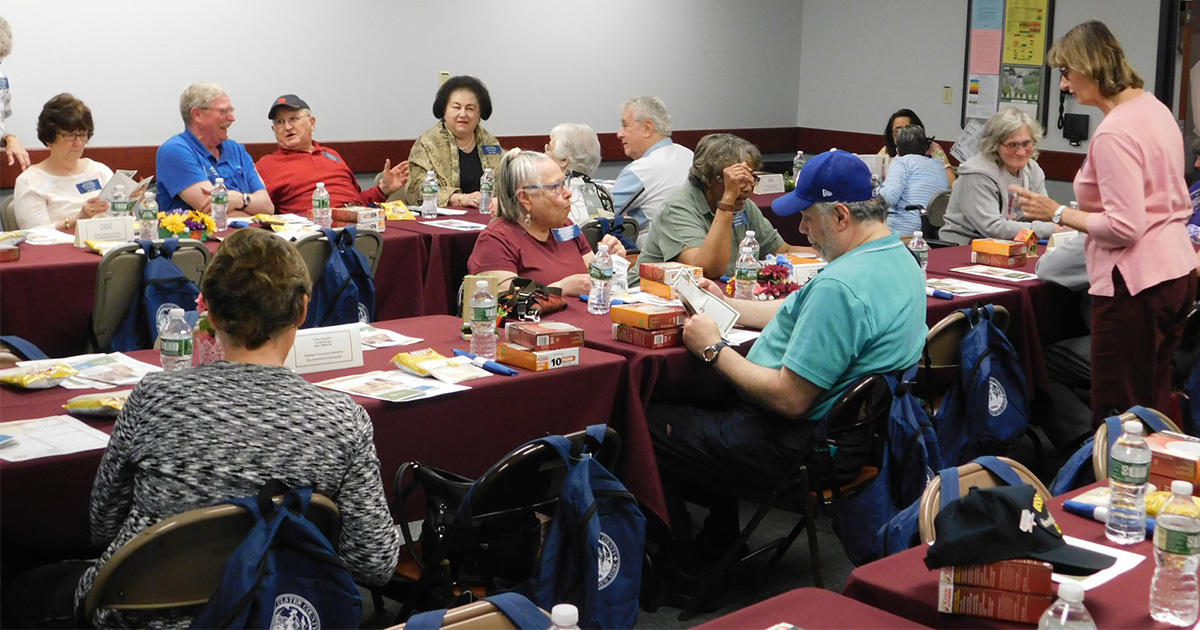
Name: Gloria Ferraro, Senior Aging Services Aide/NY Connects
Mission: NY Connects is a locally based “No Wrong Door” system that provides one stop access to free, objective, comprehensive information and assistance for people of all ages needing long term services and supports. The program links individuals of all ages to long term services and supports regardless of payment source; whether it be private pay, public or a combination of both.
How Gloria helps:
NY Connects can work with anyone who needs information on long term services and supports. We offer information and assistance for children or adults with disabilities, older adults, family members and caregivers, friends or neighbors, Veterans and even professionals who need direction helping someone remain healthy and independent. NY Connects can help find care and support to remain independent. Our staff helps you understand care options, find transportation, caregiving supports, understanding Medicare, and applying for Medicaid and other benefits.
How people can use NY Connects:
NY Connects can be accessed by telephone at (800) 342-9871/ locally (845)334-5037 or online at the NY Connects Resource Directory at www.nyconnects.ny.gov.
We have a “no wrong door” policy that comes from the state. You can find the answer for the services you need with one stop. They didn’t want people to be passed around from agency to agency.
I also get calls from a discharge planners. Someone might call from Vassar Hospital, with a patient in Ulster County, who’s going to need groceries. Or a call from a daughter in California who’s caring for a mom in Ulster County.
Success stories?
We’ve had some really cool, wonderful things happen. That’s the most satisfying thing. Someone had a student loan debt, and their social security was being garnished. Being able to get that remediated for them was great. I’ve even helped people get out of timeshares, although that’s not typical NY connect stuff.
Final thoughts:
I deal with these organizations with a daily basis, and they’re all phenomenal. We want to help people thrive, age in place, be in their home, live the same life everyone else wants to live. I see the efforts of all these agencies. We all kind of do the same thing, but the population isn’t receiving the same thing at the same time. One agency could be going to gateway for one issue, and seeing ARC or Mental Health for something completely different. We all are pretty specialized.
3. Family Services
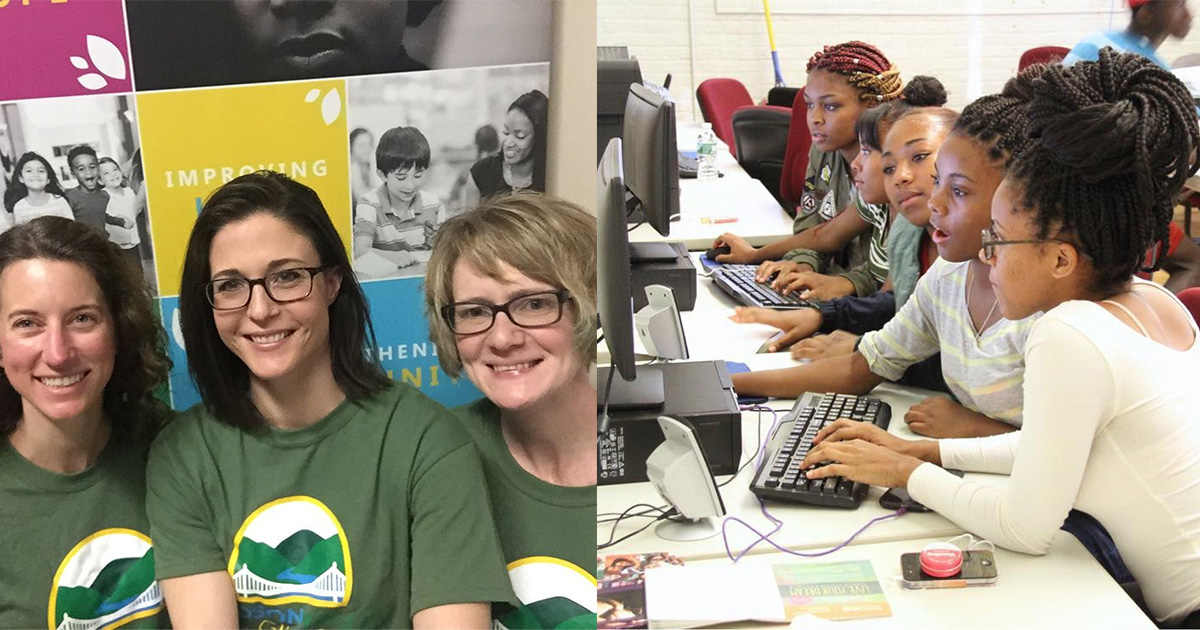
Name: Carol Sutcliffe, Ulster County Family Advocate
Mission (From website): Our mission is to help families and individuals help themselves through direct services, collaboration, and advocacy.
(Carol): Family Services has many programs. Primarily we’re in Poughkeepsie, but there is an Ulster County presence.
How Carol helps:
I’ve been in my specific position for almost 2 years. It’s a position that is funded by the Ulster County Legislature. There was a task force a couple of years ago to try to address the opioid issues in the county, to help people get treatment.
It’s a one person deal, and my role is to help people with drug and alcohol issues, help them get into treatment, help them navigate the treatment system, help them if they have difficulty with insurance coverage. I also help families when they’re concerned that their loved ones have addiction issues.
How people can connect with Family Services:
Occasionally, we’ll get someone off the street. We’re located on Aaron Court in Kingston. The phone number is advertised often on the radio by the county and on ulsterhelps.org. Half of the calls are people who would like to get into treatment themselves, and the other half is the family members, mainly mothers, who are concerned about their loved ones using.
Helping with insurance:
Generally, I hear from people who have Medicaid insurance. But frequently, I’ll get a call from someone who wants to get into treatment and has no insurance. There are treatment centers who will take someone without insurance while they’re there, they’ll get them insurance. That’s one way to go. There are also insurance navigators out there. I often refer people to the Maternal Infant Services Network.
They actually have navigators in different places in Ulster County during the week who will sit with them and get them insurance on the spot. If it’s an emergency, we can send them somewhere that’ll help them get insurance right away.
Changes in the law:
Quite honestly, I think the insurance advocacy part of this job is not as big as it was thought to be. The reason for that is that in January of 2017, laws went into effect in NYS which basically ensure that someone can get treatment for at least 14 days without the insurance company getting in the way or doing reviews, for any drug and alcohol treatment that is deemed medically necessary. I haven’t run into insurance companies not wanting to cover things. It’s not as big a part of my job as I thought it would be in the beginning.
Final thoughts:
People contact me and want to get their loved one into rehab, but it’s a voluntary thing. A lot of times they’ll be struggling because their loved one doesn’t want to go. A big part of my job is working with people in that situation.
4. HealthAlliance of the Hudson Valley
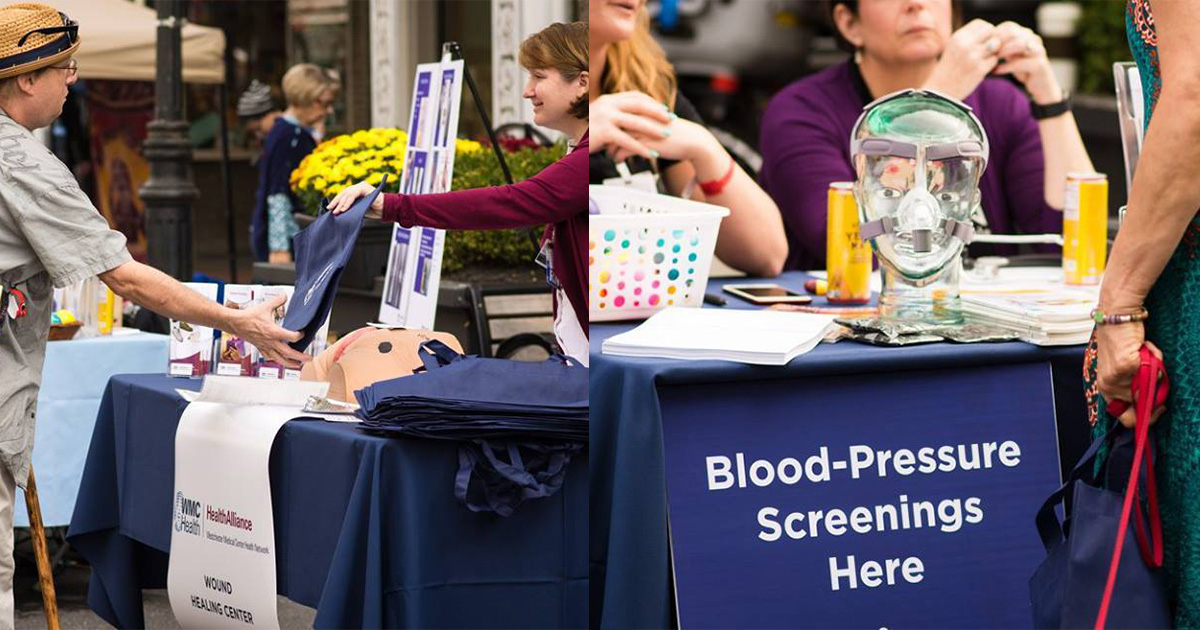
Name: Maria Elena Ferrer-Harrington, Director of Community Engagement
Maria Elena on HealthAlliance’s Mission:
The mission of HealthAlliance is “to provide the highest-quality healthcare service to all people in our communities.” Those are the words. But in actuality, we do more than that — because healthcare, to us, is more than just helping someone with a medical need.
We at HealthAlliance are working within the hospital and collaboratively with community partners — individuals, agencies, faith groups, schools and other local organizations — to help make that happen. We’re working with them to address issues affecting the well-being of people in the communities we serve.
How Maria Elena helps:
I direct the hospital’s community engagement efforts. Community engagement is different from community outreach. Community outreach is basically something done “for” the community, like participating in a health fair, where we’re the center of gravity, saying that we want to help and that we offer these particular services.
But community engagement is different. It’s not done “for” the community. It’s done “with” the community. It’s based on building relationships to address an issue. The partners we work with are equal in the relationship, and they all value the community-engagement process. These relationships are not something that you might call a “one-off,” happening only one time, or even something that happens for only a short period. They’re based on building long-term relationships to address community needs, often the root causes of those needs.
Helping patients without insurance:
HealthAlliance provides healthcare for anyone regardless of their insurance status or ability to pay. We also have a longstanding policy to help patients in need of financial assistance, regardless of their age, gender, race, national origin, socioeconomic or immigrant status, sexual orientation or religious affiliation. The amount of assistance depends on your situation. And we really work with you and support you to make it work because we understand the difficulties with healthcare costs.
Depending on your situation, our support includes helping you get health insurance you didn’t know you qualified for or didn’t ever apply for. This can include Medicaid, Parental Care Assistance Program, HIV Special Needs Plans — even Special Supplemental Nutrition Program for Women, Infants, and Children, known as WIC, which is not insurance but provides free, healthy foods for pregnant or breastfeeding women and children under the age of 5.
We also have something called “charity care.” We’re not a bank, but we provide charity care for patients treated in our emergency department or for any other medically necessary services if they don’t have insurance or can’t afford their insurance copays. Charity care is based on eligibility, and we make the decision after the patient completes a charity care application. The charity-care assistance ranges from discounted hospital services to free hospital services.
You can find out more about financial assistance on the HealthAlliance website, hahv.org, or by calling its Patient Accounting Department at 845-334-2743.
| Family Size | HHS Poverty Income $ | 150% | 200% | 300% |
|---|---|---|---|---|
| 1 | 12,140.00 | 18,210.00 | 24,280.00 | 36,420.00 |
| 2 | 16,460.00 | 24,690.00 | 32,920.00 | 49,380.00 |
| 3 | 20,780.00 | 31,170.00 | 41,560.00 | 62,340.00 |
| 4 | 25,100.00 | 37,650.00 | 50,200.00 | 75,300.00 |
| 5 | 29,420.00 | 44,130.00 | 58,840.00 | 88,260.00 |
| 6 | 33,740.00 | 50,610.00 | 67,480.00 | 101,220.00 |
| 7 | 38,060.00 | 57,090.00 | 76,120.00 | 114,180.00 |
| 8 | 42,380.00 | 63,570.00 | 84,760.00 | 127,140.00 |
| Discount | 100% | 80% | 50% |
(How to read this table: If you have a bill from HealthAlliance, and you’re in a household of two that makes $32,000 a year, you may qualify to have your bill reduced by 80%).
What about people not calling ambulances in an emergency because of financial reasons?
We are very aware that this is a real concern for the community. Unfortunately, we at HealthAlliance don’t have our own ambulance company in Kingston. Those are owned and operated by separate companies. What we can do at HealthAlliance is work with you to help you understand your bill and maybe encourage you to contact the ambulance provider to see what can be done. Remember that if you are eligible for Medicaid, Medicaid would pay any medical bill you have, including the ambulance, for as many as three months before you enrolled on it. Also, if you have a mental health emergency you can call the Mobile Mental Health ambulance, which is completely free for residents of Ulster County.
Do affordability issues come up for “multi-visit patients?”
(Note: Hudson Valley One recently covered HAHV’s new Emergency Department Care Navigation program to help multi-visit patients who suffer from a mix of “homelessness, mental illness and substance abuse.”)
Multi-visit patients — who we used to call “high utilizers” — do cost the hospital money because they come to our emergency department so often and may not be able to pay. But rather than the money, we focus on their needs — or, perhaps, to say it better, their unmet needs. Why do they come here so often?
We try to understand the underlying social and behavioral reasons why they come so frequently and work with them and our community partners — that’s one of the places where community engagement comes in — to find the most appropriate solutions so the patients can improve their living conditions and quality of life. Doing this and this alone has been shown to improve people’s health.
What are some of the other agencies or coalitions working with HealthAlliance to treat our population?
We’re a small community, so everybody knows everybody. We are part of different coalitions, and we foster connections every month. We work closely with The Institute for Family Health, Family of Woodstock, Catholic Charities, RUPCO, Planned Parenthood, even Fidelis Care, the insurance company, just to mention a few.
Biggest successes?
I have to say I have many satisfactions. But I guess my biggest success is the progress we’ve made in establishing the community-engagement relationships. This is a new concept, having a hospital work with other groups to solve community needs. Hospitals used to be places that you simply went to if you were very sick. Now we’re truly engaging with the community. The collective thinking is always better than the thinking of just one entity.
5. The Institute for Family Health

Name: Courtney Beaupre, Director of Care Management Upstate
Their mission (from website:
The mission of the Institute for Family Health is to improve access to high quality, patient-centered primary health care targeted to the needs of medically underserved communities.
How Courtney helps:
I’m the regional director of our care management programs for upstate (our Hudson Valley sites). I oversee our benefits programs, our care navigation for adults and children, and the maternal-infant community health collaboration in Poughkeepsie, where we do patient navigation for women and children. I oversee the sites we have in Ellenville, Kingston, New Paltz, Hyde Park, and Poughkeepsie.
Helping patients afford health care:
The Institute is a federally-qualified health center. We don’t turn anybody away regardless of their ability to pay. We will take anyone who needs healthcare, behavioral health, dental care, and make sure they have access to that. We have a variety of benefit programs including a sliding scale program, financial hardship and a 340B pharmacy discount program.
Sliding scale:
Whether someone has insurance or not, they can come in and apply for the sliding scale fee. It’s based on the federal poverty guidelines. The eligibility is based on income and household size, which allows us to know where they fit on the sliding scale fee.
For those who are above 200% of the federal poverty guidelines, they would be charged 100%, but maybe they still can’t afford it, then they can still apply for financial hardship.
If they make $30,000 for one person, that’s 200% over the guidelines. They can still apply for a financial hardship. They have to say they pay X amount for rent, they have these other expenses, and they can’t afford any extra to pay for an appointment. Everything has to have supporting documentation. They have to have documents about what their income is, what their expenses are, they have to have receipts of their expenses such as a home health aide, etc.
Once we’re able to see they truly have financial hardship, that gets processed through our finance department. They’re able to either put them on a nominal fee to pay, or they can help make a payment plan that’s easy for them to be able to pay in installments. Even if someone does the sliding scale, we still work with people.
Regardless of anything, anyone can come here. We want to try to get them into the programs, make sure they can get insurance, or at least have access to healthcare.
Navigating the health exchange:
If you find yourself without insurance, it can be difficult to navigate the health exchange. I’ve worked in care mangagement and made phone calls, and I’ve been on the phone for an hour with people, insurance navigators through the state. The nice thing about our enrollment specialists here is they have a direct line in. They can go directly into the state sites instead of just calling on the phone.
Collaborating with other agencies in Ulster County:
We’re so lucky in Ulster, because we have so many providers and services that are able to help people at that point of contact. There just seems to be more services than other places.
We work together with a lot of the different places. We’re always busy… in Kingston, we see between 10-15 people per day for one navigator.
How people can come in and get help:
We’ve gained the reputation of providing these services.
We will serve anyone even if they’ve never been here before. We make sure they get what they need, and refer them to outside agencies and resources.
6. Always There Home Care

Name: Susan Koppenhaver, Chief Executive Officer
Mission (from website): To assist residents of all ages in the Mid-Hudson Valley to regain and/or maintain optimum health, to remain at home and to prevent premature or recurring institutionalization by providing home care, healthcare and individual quality of life services.
How Always There helps:
Home care agencies have always sort of been partly a case manager too. We’re sometimes the only professional people that can get to somebody’s house. Our people try to get a sense of what’s going on in a patient’s house; we ask about their medications, and we have the opportunity to help them with the non-medical part of their care. We provide trained clinicians to help patients and clients get back on their feet, or stay in their homes as long as possible.
We try to get them hooked up with the Office for the Aging, who can help them with a Medicare issue, or a transportation issue. We end up working with people like RCAL, or people who will do home renovations for people with mobility or disability issues. They might say they don’t have enough food, so we get them hooked up with someone like Gateway to deliver bags of food, through Meals on Wheels. That’s part of the networking that we do in the community.
We’re also involved in DSRIP (NYS’ Delivery Reform Incentive Payment Program to redesign Medicaid); we hired and placed a care coordinator who works full-time in Dr. Paul Llobet’s office, and he does case management, making sure people are signed up for everything, putting people in touch.
How people can get help from Always There Homecare:
If we walk into a home, we’re asking about your medications. If you say, “I’m on this this and this, and the doctor told me to get on this other medication at the hospital, but I can’t always make it to the bus, or I don’t have a car, or my daughter is supposed to get it, etc,” we’ll help figure out a solution.
We went ahead three years ago and put together a resource directory of anything in the county that can possibly help someone. We give it to all of our nurses. If you need something that we can’t help with, we’ll at least have a contact number.
Final thoughts:
This is a very collaborative county.
7. Gateway Community Industries

Name: Sophie Halpern, PROS Clinical Director
Mission (from website): Gateway Community Industries, Inc. assists people in choosing, acquiring, using, and maintaining the skills and supports necessary to achieve success and satisfaction in their lives. We accomplish this through integrated vocational, therapeutic, residential, and business services.
How Gateway helps:
We serve a Medicaid population with a small, carved-out pocket of the population that is private pay, that comes to us on a sliding scale basis. Those are the individuals honestly that have the most difficulty. The population that I serve is seriously mentally ill. There are some services for those individuals if they are of a Medicaid cross-section. The people that come to us who are in need of those services, but who do not have Medicaid have a much more difficult time.
They are unable to pay for the service, even the sliding scale. We support people in a range of different financial situations in being able to not only connect with entitlements or benefits that exist in relation to insurance, but also in signing up for insurance itself. We do help to coordinate that part of the process in making sure that person has access to healthcare services based on their enrollment in health insurance. It really is kind of situational, but as social workers, we are aware of community resources to help the ends meet in terms of eligibility for certain programs and filling in the gaps when somebody is not eligible for something but has the need. We piece it together the best we can when we work with people.
Finding community resources:
If someone comes in without coverage, we would certainly do some informal linkage and referral to other resources in the community during our intake process. When somebody already is enrolled in our program, we absolutely play that role of being an informal case manager to support people.
We often are coordinating with Healthalliance and with the case managers around the community, like the Mental Health Association of Ulster, People Inc., Hudson Valley Community Services, Family of Woodstock. There are a handful of coordination agencies within the community.
What help is needed beyond insurance?
Our population often needs some form of cash assistance, rental assistance or supportive housing placements. It all contributes to someone’s health, wellness and stability. I can think of two cases right now where we’re working on helping to connect to different entitlements through social services. Two of them actually are cash assistance, which translates to rental assistance. One of them is homeless currently, one is living in a pretty seedy halfway house, and we’re trying to help both of them find housing stability through fostering the connection to the different services that they’re entitled to.
Our staff has been working really hard to try to get them connected to those services, because it’s the primary thing they need to get to have some form of income to qualify for other services that they could really benefit from. We’re working really closely to figure that out with them right now. They’ve already found an increased level of stability, even in just having the conversations and starting the process of obtaining those benefits. It really instills hope in someone that there’s a possibility for change if that tangible resource is available.
Final thoughts:
We’re helping them with the skills we take for granted, but they’re all paramount for helping yourself in this world. They can’t organize, they can’t plan it out, they can’t initiate the task. That’s something that many of the folks that we hope lack.
8. Family of Woodstock
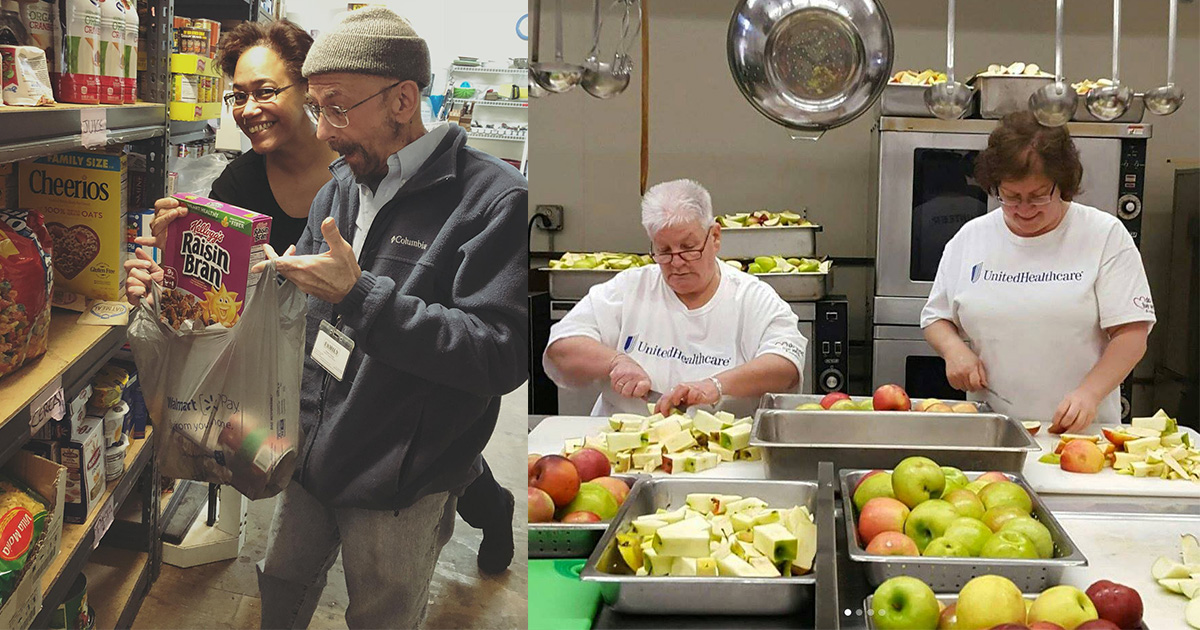
Names: Michael Berg, Executive Director and Salvador Altamirano-Segura
Mission (from website): The goal of Family’s programs is to assist people to achieve self-sufficiency and self-respect.
How they help:
Michael: We have a golden paragraph. It’s a summary of all the services provided in Kingston.
Sal: I supervise Adult case management services, which has various components. We help individuals on parole coming out of prison, they have a long-term case management program, which is subsidized housing for families and singles. We have a health home program, which has case management and care coordination through the health home. We also provide case management to the homeless, and mental health case management.
We can help individuals who are not being covered by Medicare or anything else. Anybody that walks through the door.
We will do an assessment, and if the person is seeking medical care, we will see if they qualify for insurance. If they believe they do, they refer them to a care navigator, who is paid by the state. Their only job is to sign people up for health insurance. We can help them in many situations. If they have no income, it’s pretty easy, but if they have some limited income, it can become more complicated than that.
How often does health care affordability become an issue?
Sal: It’s not that often for us, to be honest. Sometimes it’s difficult, when someone doesn’t have insurance, or if they’re undocumented, you can get insurance. If you’re pregnant, you can get insurance related to anything about the pregnancy. You can get Medicaid to treat a life-threatening situation.
What are some of the factors connected to people affording health care?
Michael: One of the things that I believe is special is that we address the presenting problem. We do not limit what people can ask for. We certainly refer to every other agency in our county.
Sal: Our view as an agency is that everything is connected. If an individual comes to us because they don’t have food on the table, it might not be a food problem. Everything is connected. Not having food might also have to do with healthcare, or a physical disability. It might even have to do with trauma they experienced as children.
Michael: The way the system is moving now, it’s considering the social determinants of health. Housing is becoming part of the healthcare. Your doctor might ask, is your housing unstable? If you don’t have food, or you’re homeless, or you’re having problems with your children, your doctor might be the person you end up talk to. For our clients, we might be their only resource.
What’s an example of addressing health without directly providing health care?
Michael: We started providing food for kids at the Hodge Center. We were giving kids snack. We literally could not feed them enough. We made a decision to go to full five course dinner that we serve to every kid at the Hodge Center in the afternoon, sometimes that’s 80 kids.
Because school breakfast and lunch is so important, we started doing breakfast and lunch in the summer. They we were doing it for the Boys and Girls Club, the Read and Write Center, the Center for Creative Education, the Kingston Library, the African American Library on the Rondout. This summer, we’re going to give out 10,000 meals.
We have to present a full package where people can select what they need. That’s really our strength. We make plenty of referrals, but we do the most that we can do.
Where does your funding come from?
Michael: There are two ways you can run an agency: you can look at what money is available and build your agency around it, or you can start providing services and shift as you identify what people need, while seeking money and training. We’re putting ourselves out there and letting people say what they need. We have governmental contracts, and we fund-raise a lot.
Sal: Funding sources have become really outcome based. On the one hand they’re saying you need to address every single thing, but they also want to narrow down to what can you demonstrate you achieved.
Michael: I don’t want to run the agency based on what money I have. The way we have to present ourselves is asking, “What do you need?” That identifies areas that we have to work toward.
Final thoughts:
Michael: It’s interesting… we have grown, but we’ve tried to be really consistent in the values we instill in the programs. We may have specialized services, but we’re always available. Anybody can show up and get help.
